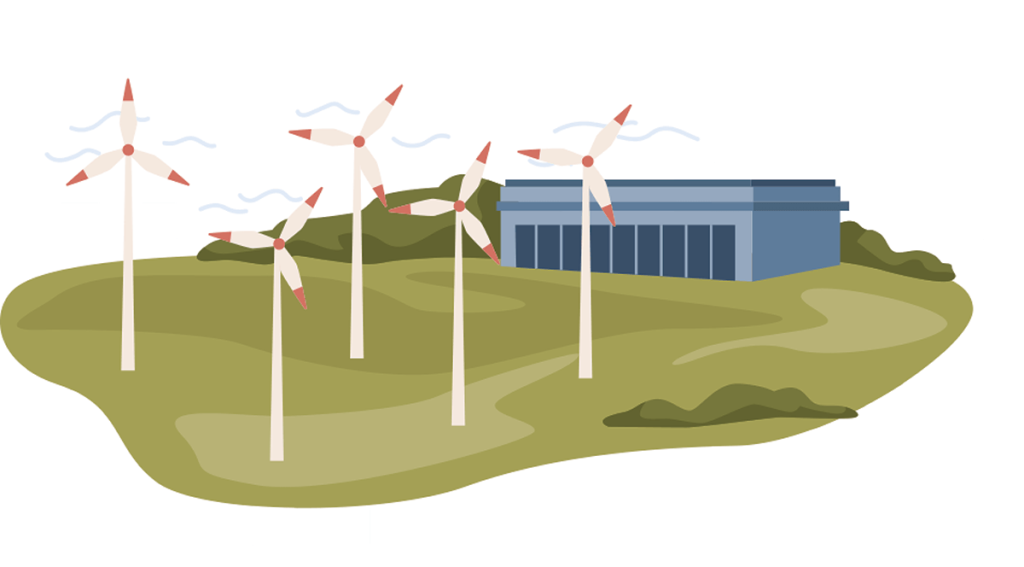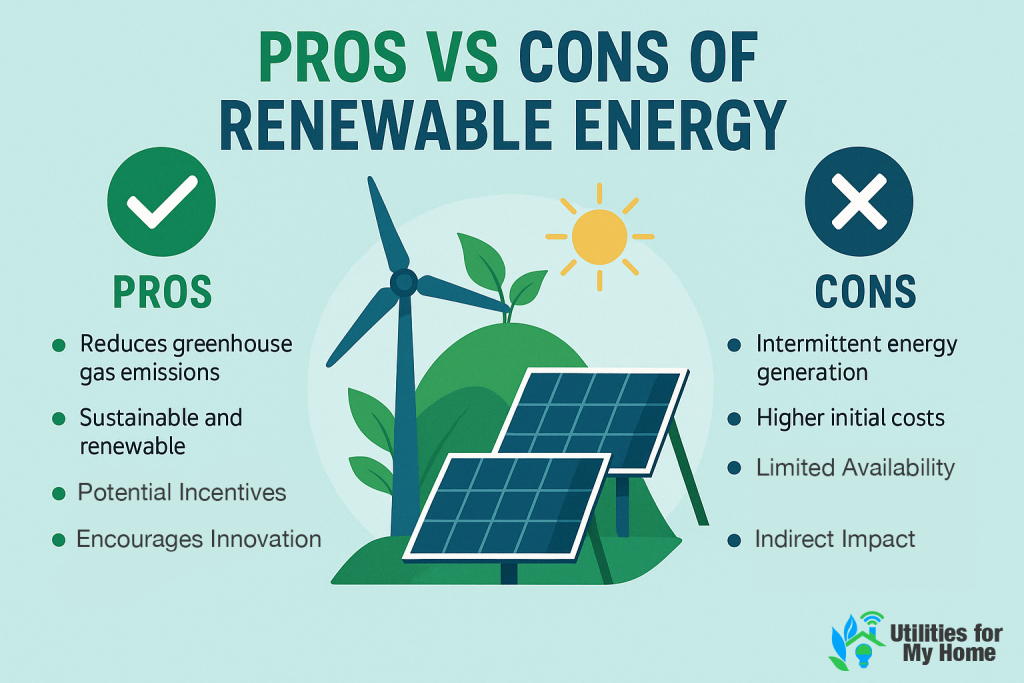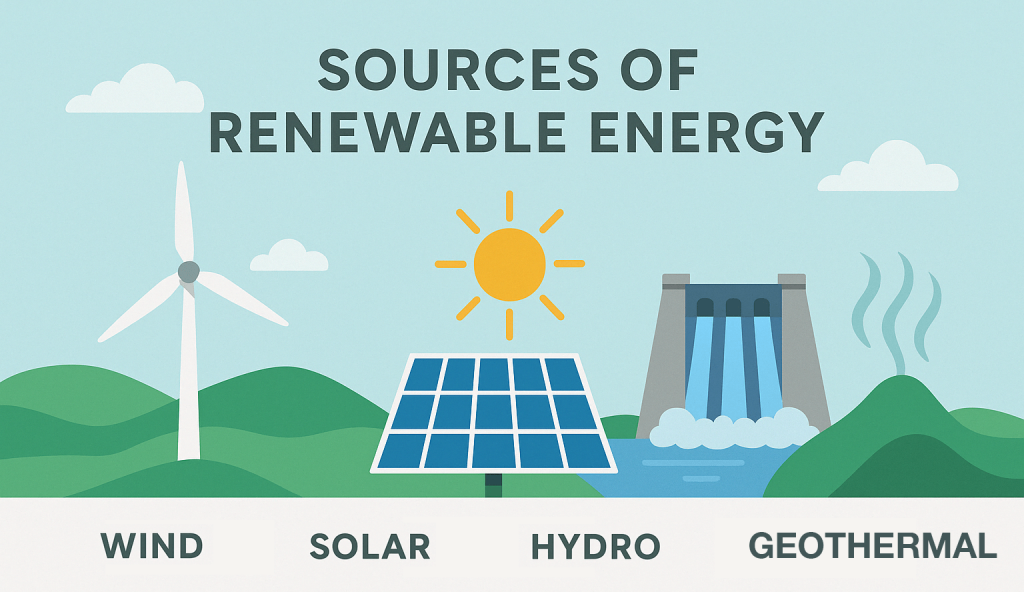Key Takeaways
- Renewable energy plans source electricity from clean, sustainable sources like wind, solar, or hydro, helping reduce carbon emissions and support a greener future.
- These plans use Renewable Energy Credits (RECs) to ensure your energy use is matched by clean energy added to the grid, even if the power you receive isn’t directly from renewables.
- While renewable energy plans can be more expensive than traditional options, they offer significant environmental benefits and often come with incentives like tax credits or rebates.
Looking for a way to power your home while making a positive impact on the environment? Renewable energy electricity plans are a great option! These plans source electricity from clean, renewable sources like wind, solar, hydroelectric, or geothermal power instead of relying on fossil fuels. When you sign up for a renewable energy plan, your provider ensures that for every kilowatt-hour (kWh) of electricity you use, an equivalent amount of renewable energy is added to the grid. It’s a simple way to support sustainability without changing how you use electricity at home!

How Do Renewable Energy Plans Work?
Switching to a renewable energy plan doesn’t mean your home will be directly powered by wind or solar energy, but it does ensure that clean energy is being produced on your behalf. Here’s how it works:
- Energy Sourcing:
Your provider either generates electricity from renewable sources or purchases Renewable Energy Credits (RECs). These RECs certify that a portion of the electricity supplied to the grid comes from green energy sources. - Grid Integration:
Renewable energy is fed into the general power grid, which combines electricity from many sources. While the energy coming into your home is a mix, your participation ensures that more clean energy is generated overall. - Billing and Usage:
You’ll still receive a typical electricity bill based on your usage, but your provider guarantees that the energy you consume is matched with renewable energy production.

Pros of Renewable Energy Plans
Choosing a renewable energy plan comes with many benefits, both for you and the planet:
- Environmentally Friendly: Lowers carbon emissions and reduces your overall impact on climate change.
- Sustainable Choice: Supports long-term energy solutions by decreasing reliance on fossil fuels.
- Potential Incentives: Some states or providers offer tax credits, rebates, or discounts for choosing renewable energy.
- Encourages Innovation: The more people who choose renewable plans, the more investment goes into clean energy technology and infrastructure.
Cons of Renewable Energy Plans
Here are a few things to consider before making the switch to a renewable energy plan:
- Higher Costs: Some plans may have slightly higher rates due to the cost of producing and integrating renewable energy.
- Limited Availability: Not all areas offer renewable energy plans, depending on local providers and regulations.
- Indirect Impact: Your home won’t receive direct renewable energy, but your choice still helps increase the amount of clean energy in the grid.
- Variable Supply: Sources like solar and wind can be affected by weather conditions, although advancements in energy storage are helping to manage this.
Where does Renewable Energy Come From?
Renewable energy sources are like the superheroes of the energy world—they’re clean, sustainable, and endlessly replenished by nature. Unlike fossil fuels, which take millions of years to form and release harmful greenhouse gases when burned, renewable energy comes from sources that won’t run out and have a much smaller environmental footprint. Let’s explore some of the most common types and how they’re helping power our world in a greener way!

Solar Power: Harnessing the Sun’s Energy
Solar energy is one of the most popular renewable sources, and it’s easy to see why. By using solar panels, we can capture sunlight and convert it into electricity to power homes, businesses, and even entire communities. Solar power is incredibly versatile, it can be used on a small scale, like rooftop panels on a house, or on a large scale, like massive solar farms. Plus, it’s silent, produces no emissions, and works anywhere the sun shines (which is pretty much everywhere!).
Wind Energy: Catching the Breeze
Wind energy is another clean and powerful source of renewable energy. Giant wind turbines capture the kinetic energy of moving air and convert it into electricity. Wind farms can be built on land or offshore, where strong, consistent winds make them especially effective. While wind turbines do take up space, they’re a fantastic way to generate large amounts of electricity without burning fossil fuels.
Hydropower: Tapping into Water’s Power
Hydropower, or hydroelectric power, uses the energy of flowing or falling water to generate electricity. Dams are the most common way to harness this energy, but smaller systems can also use rivers or streams. Hydropower is one of the oldest and most reliable renewable energy sources, and it’s incredibly efficient. Plus, it can provide a steady supply of electricity, making it a great complement to more intermittent sources like solar and wind.
Geothermal Energy: Earth’s Hidden Heat
Geothermal energy taps into the heat beneath the Earth’s surface to generate power or provide direct heating. This energy comes from the natural decay of radioactive materials in the Earth’s core and the heat leftover from the planet’s formation. Geothermal power plants are typically built in areas with high geothermal activity, like hot springs or volcanic regions, but geothermal heat pumps can be used almost anywhere to heat and cool buildings efficiently.
Biomass: Energy from Organic Materials
Biomass energy comes from organic materials like wood, agricultural waste, and even algae. These materials can be burned directly for heat or converted into biofuels like ethanol and biodiesel. While biomass does release carbon dioxide when burned, it’s considered renewable because the plants used for biomass absorb CO2 as they grow, creating a balanced cycle. It’s a great way to repurpose waste and reduce reliance on fossil fuels.
Is a Renewable Energy Plan Right for You?
If you’re looking for a way to reduce your carbon footprint and support clean energy, a renewable energy plan could be the perfect fit! While it may cost slightly more in some cases, the long-term benefits for the environment and energy sustainability make it a worthwhile choice. Be sure to explore available plans in your area, compare costs, and consider how it aligns with your values and budget. By making the switch, you’re helping to create a cleaner, greener future!
FAQs About Renewable Energy Plans
Will my home be powered directly by renewable energy if I choose a renewable plan?
Are renewable energy plans more expensive?
What types of renewable energy sources are used in these plans?
How can I find out if renewable energy plans are available in my area?
About the Author
David has been an integral part of some of the biggest utility sites on the internet, including InMyArea.com, HighSpeedInternet.com, BroadbandNow.com, and U.S. News. He brings over 15 years of experience writing about, compiling and analyzing utility data.
